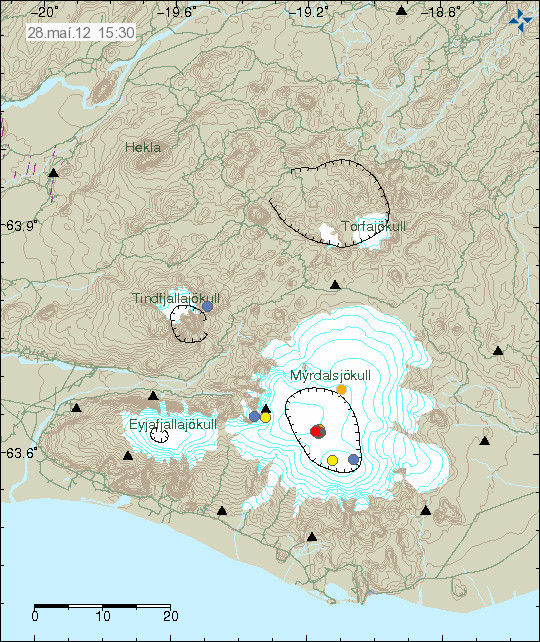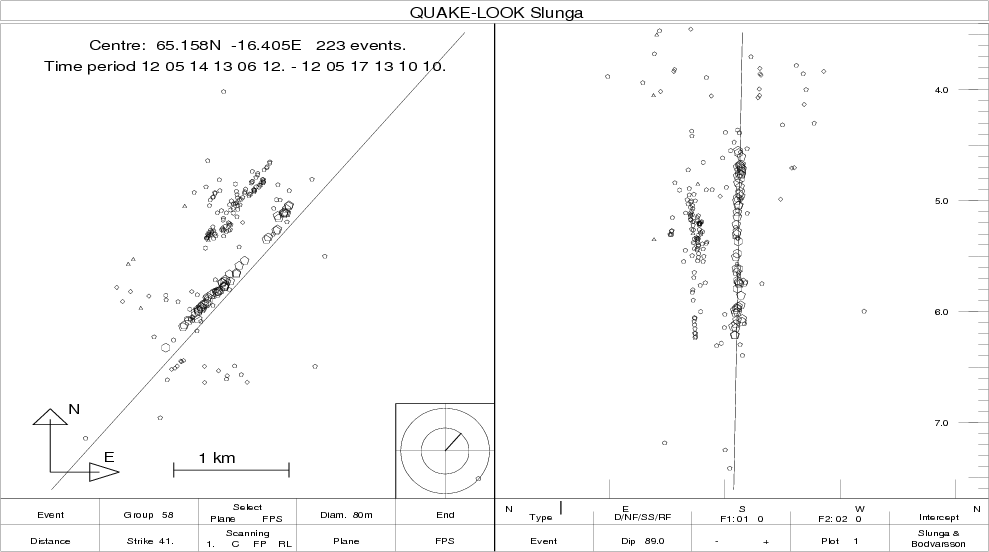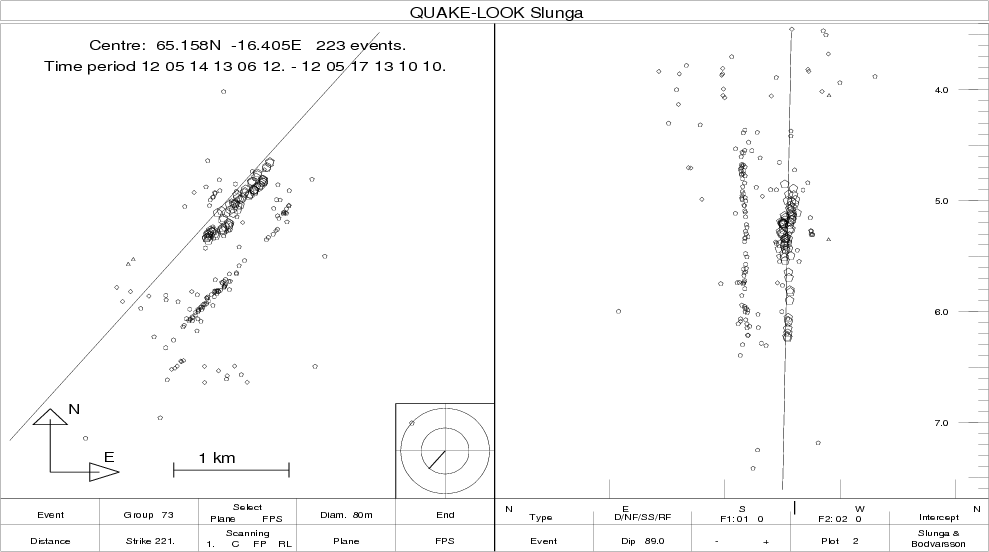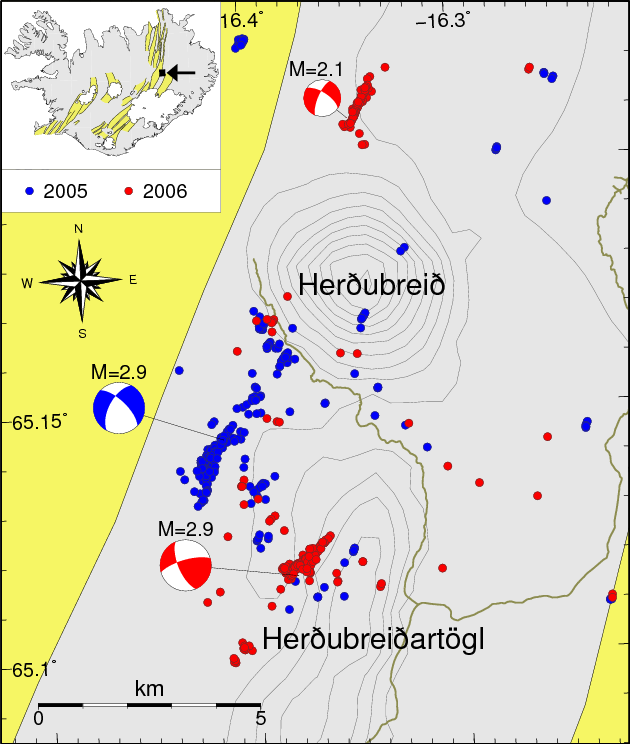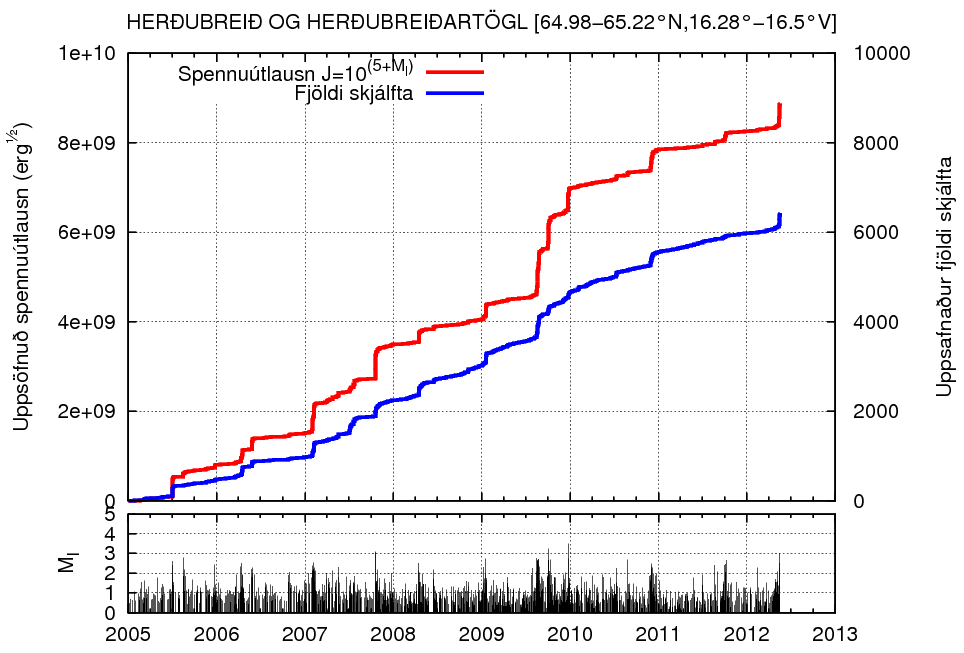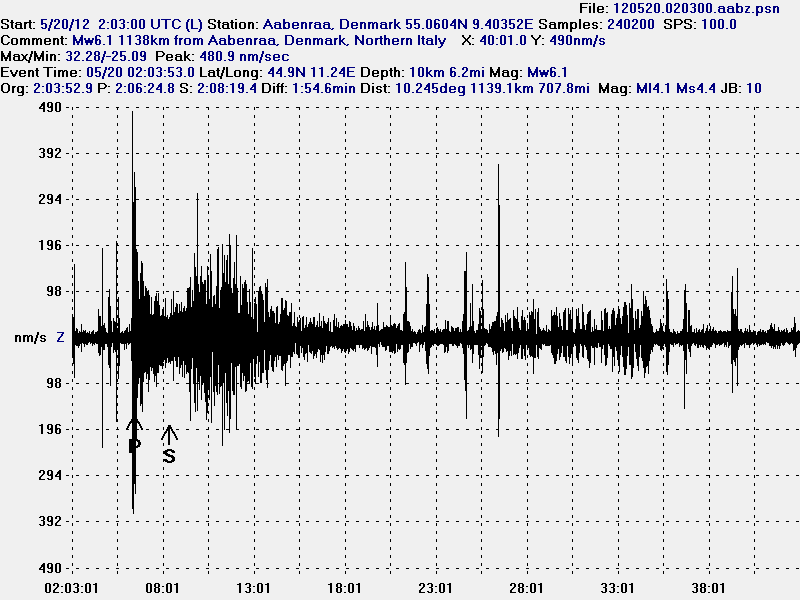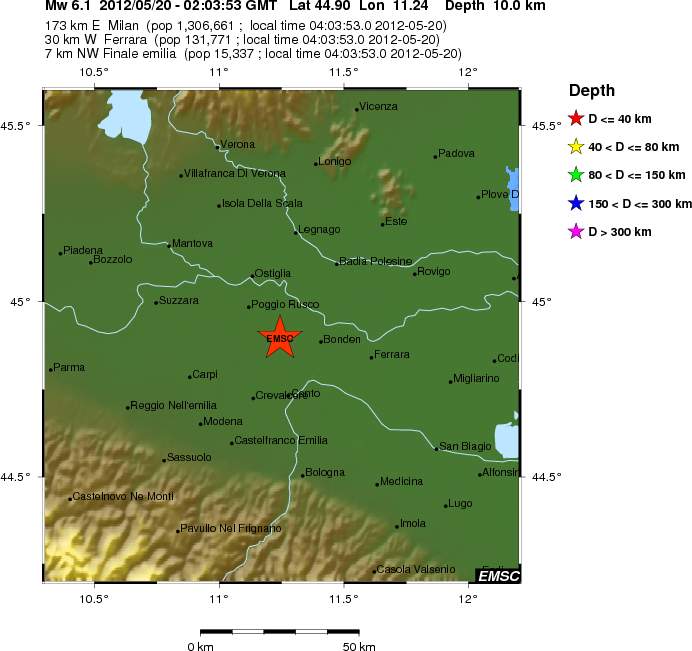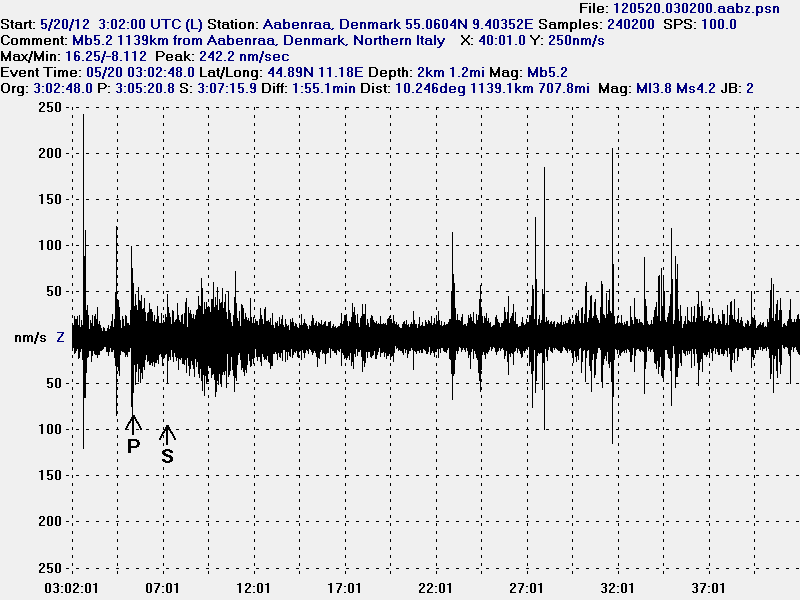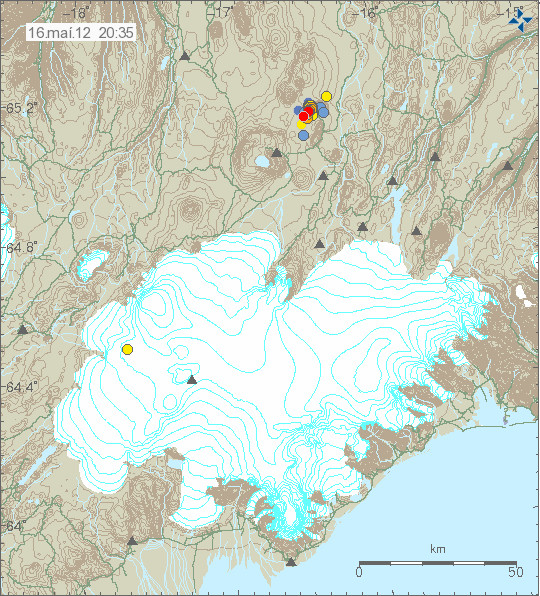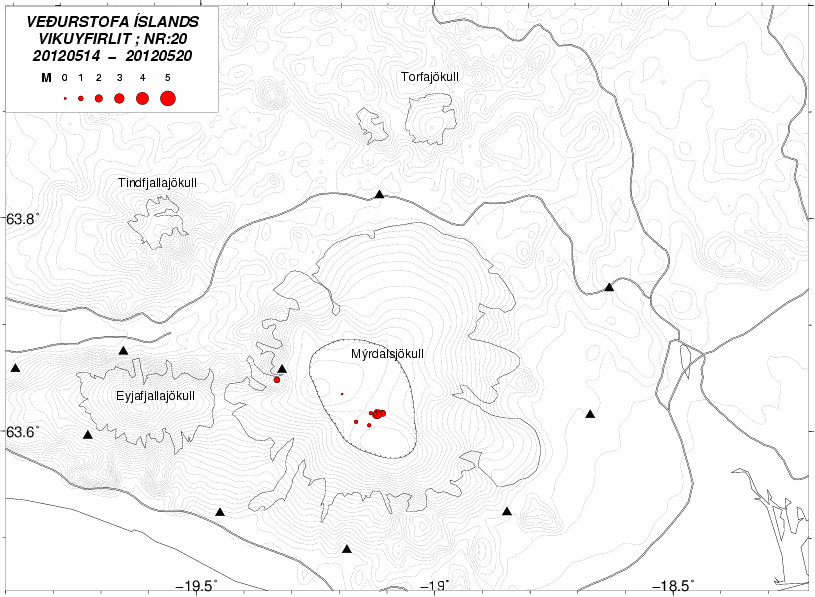This morning there was a short earthquake swarm in Katla volcano caldera. This earthquake looks like a minor dike intrusion did take place this morning. Current series of events did start on 28. April 2012. With a small earthquake event and a small glacier flood that did follow it. Along with harmonic tremors coming from the glacier flood and possibly Katla volcano caldera (hydro-thermal activity boiling or something of that nature). I do not yet know if there was any glacier flood following the event this morning. But so far there is nothing that suggests a small glacier flood did take place following the earthquake swarm this morning.
The earthquake swarm this morning took place on an location that did erupt on 8 and 9th of July 2011. So it is clear the area that erupted last year is picking up activity again. But there was an drop in activity from end of November 2011 until end of April 2012.
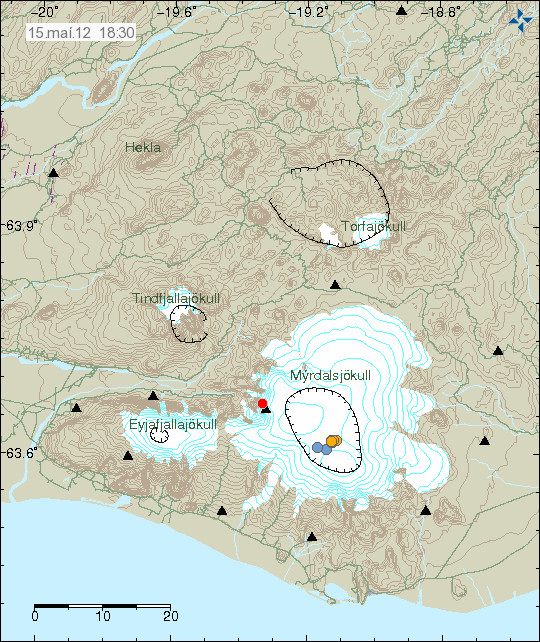
Earthquake activity in Katla volcano this morning. Copyright of this picture belongs to Icelandic Meteorological Office.
This earthquake activity did appear well on my geophone at Skeiðflöt farm.

Earthquake activity in Katla volcano caldera this morning on my Skeiðflöt geophone. There is a lot of noise on this geophone. But earthquake activity can still be seen on this. The earthquakes are marked by red (some noise is also marked by red). This picture is released under Creative Commons Licence. See CC Licence page for more details.
It is clear that Katla volcano seems to be warming up to an eruption. But it is impossible to know when such eruption might happen, or how big it is going to be.
Herðubreið
Earthquake activity continues south-west of Herðubreið. But almost all of the earthquakes have been less then ML2.0 in magnitude. Earthquake activity has been slowing down all day. At the moment, it appears this earthquake swarm is close to being over.
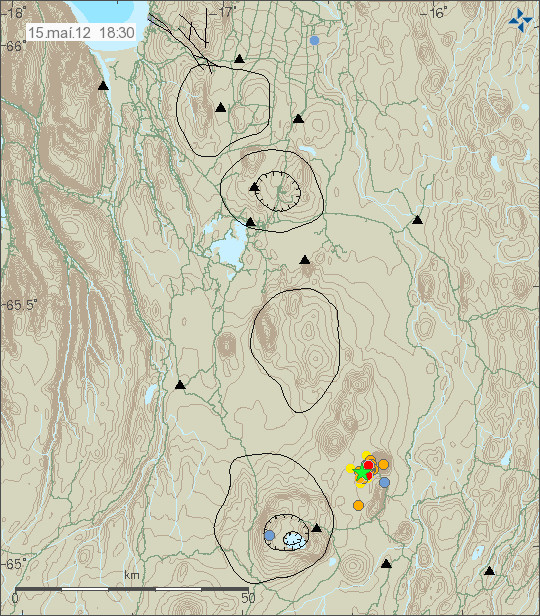
The earthquake activity close to Herðubreið mountain. Copyright of this picture belongs to Icelandic Meteorological Office.
This area is well known for for earthquake activity. So this is not something that is new in this area.
Reykjanes Ridge
According to EMSC and USGS there have been several earthquakes with the magnitude of Mb4.5 to Mb4.8 on the Reykjanes Ridge. Earthquake activity is common on the Reykjanes Ridge. But because of the location and depth (around 2km) it is impossible to know if there any volcano eruption taking place at this location. It might well be, or not.
Kolbeinsey Island
Over the past weeks there has been some earthquake activity close to or in Kolbeinsey Island. The largest earthquakes have had the magnitude around ML3.0, with some underestimates due to distance from the SIL network. At this moment it is impossible to know if this earthquake activity is related to possible eruption activity. But it believed that an eruption (or dike intrusion) took place on Kolbeinsey Ridge in the year 1999. It started off with a large earthquake swarm.


